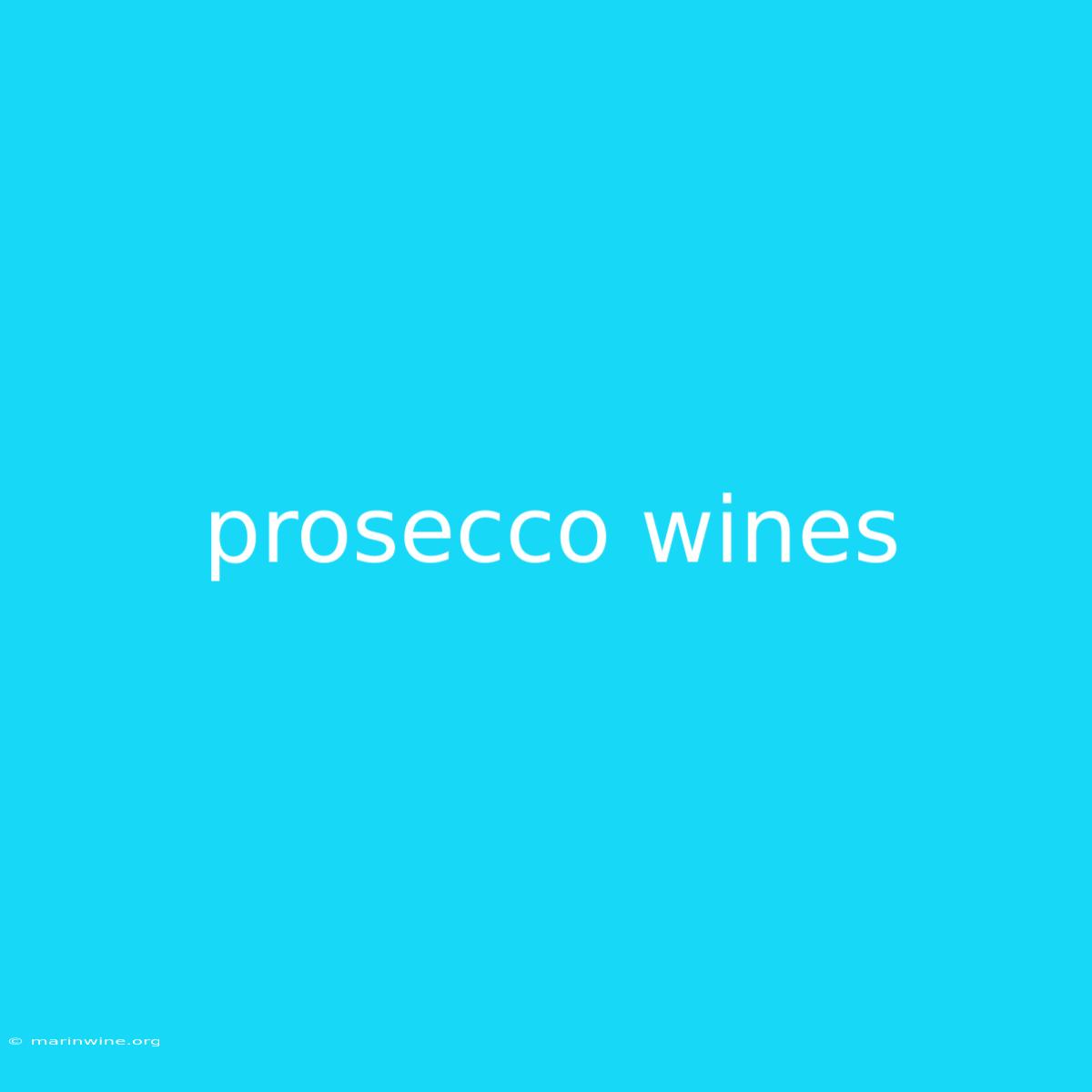Uncorking the Fizz: Discovering the World of Prosecco Wines
Have you ever wondered what makes Prosecco so special? It's more than just bubbly - it's a vibrant, aromatic wine with a rich history and diverse range of styles. Let's dive into the world of Prosecco and explore its unique qualities.
Why It Matters: Prosecco is not just a popular party drink; it's a wine with a fascinating history and a distinct flavor profile. Understanding the nuances of Prosecco can elevate your appreciation for this beloved beverage, guiding you to your perfect glass.
Key Takeaways of Prosecco:
| Key Takeaway | Description |
|---|---|
| Made in Italy | Prosecco originates from specific regions in northeastern Italy. |
| Glera Grape | Prosecco is made primarily from the Glera grape, known for its delicate floral aromas. |
| Diverse Styles | Prosecco comes in various styles, from the classic DOC to the more complex DOCG, each offering unique characteristics. |
| Food Pairings | Prosecco's versatility pairs well with diverse cuisines, from light appetizers to seafood dishes. |
What is Prosecco?
Prosecco is a sparkling wine produced in the northeastern region of Italy, specifically in the Veneto and Friuli Venezia Giulia regions. The wine's name derives from the Prosecco hills, a region known for its unique terroir and ideal growing conditions for the Glera grape.
Key Aspects of Prosecco:
- Origin and History: The history of Prosecco dates back to the Roman era, when the area was known for its wine production. The modern-day Prosecco DOC was established in 1969, solidifying its place as a renowned sparkling wine.
- Glera Grape: The Glera grape is the primary grape used for Prosecco. Its unique characteristics, including its high acidity and delicate floral aromas, contribute to the wine's refreshing and fruity character.
- Production Methods: Prosecco undergoes a secondary fermentation process, called the Charmat method, which involves fermenting the wine in large stainless steel tanks. This method creates a bubbly wine with fine, persistent bubbles and a fresh, fruit-forward palate.
- Styles of Prosecco:
- DOC: The Prosecco DOC is the most common style, representing a wide range of wines from the Prosecco production area.
- DOCG: The Prosecco DOCG encompasses specific regions, such as Conegliano Valdobbiadene and Asolo, producing higher-quality, more complex wines.
- Prosecco Spumante: This style features a higher pressure and greater carbonation, resulting in a more intense fizz and a more assertive flavor.
- Prosecco Frizzante: This style is slightly less bubbly than Spumante, providing a softer, more delicate effervescence.
Exploring the Connection Between Prosecco and Food Pairing
Prosecco's versatility makes it an excellent choice for a wide array of cuisines. Its refreshing acidity and delicate flavor profile complement light appetizers, seafood dishes, and even spicy Asian cuisine. The lighter styles of Prosecco, such as Frizzante, pair well with delicate flavors, while Spumante styles can hold their own against richer dishes.
Understanding the Production Process of Prosecco
The production of Prosecco involves a series of steps, beginning with the harvesting of Glera grapes. These grapes undergo a primary fermentation, followed by a secondary fermentation in stainless steel tanks. This process creates the distinctive bubbles and fresh, fruity flavors of Prosecco.
FAQ:
Q: What is the difference between Prosecco and Champagne?
A: Prosecco and Champagne differ in grape variety, production method, and flavor profile. Prosecco is made primarily from the Glera grape and uses the Charmat method, resulting in a lighter, fruitier style. Champagne is made from Chardonnay, Pinot Noir, and Pinot Meunier grapes and uses the traditional method, resulting in a more complex, yeasty flavor profile.
Q: What is the best way to serve Prosecco?
A: Prosecco is best served chilled, between 45-50°F (7-10°C). Use a champagne flute or a wine glass to fully enjoy its aromas and bubbles.
Q: How long can I store Prosecco?
A: Prosecco is best consumed fresh, within a year of production. However, it can be stored in a cool, dark place for up to 2-3 years.
Q: Is Prosecco good for your health?
A: Like all alcoholic beverages, Prosecco should be consumed in moderation. However, studies have shown that moderate consumption of red wine, which contains antioxidants, can be beneficial to health.
Tips for Enjoying Prosecco:
- Chill your glass: A chilled glass will keep the Prosecco colder and preserve its delicate flavors.
- Choose the right style: Consider the food you're serving and your personal preference when selecting a Prosecco style.
- Experiment with different pairings: Don't be afraid to explore different food pairings with Prosecco to find your favorite combinations.
- Sip slowly: Take your time to appreciate the aromas and flavors of Prosecco.
- Celebrate with Prosecco: Prosecco is a perfect celebratory beverage, adding a touch of elegance to any occasion.
Summary of Prosecco Wines:
This journey into the world of Prosecco has explored its rich history, diverse styles, and unique characteristics. From its origins in the Prosecco hills to its refreshing flavors and versatile pairings, Prosecco offers a delightful experience for any wine enthusiast. So the next time you're looking for a bubbly, refreshing, and flavorful beverage, remember the charm and sophistication of Prosecco. Cin cin! (Cheers!)

